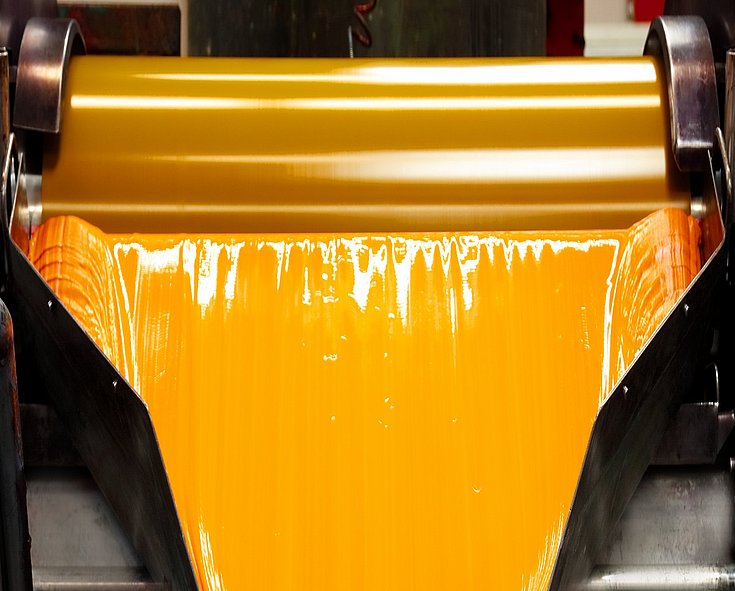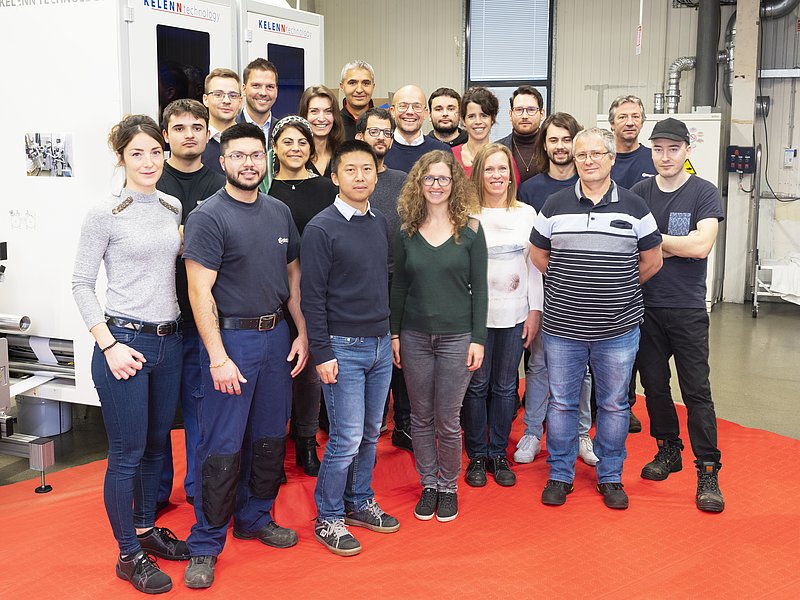
Colors are passion, emotions and personality. At Siegwerk, inks and coatings are our specialty and we use color to bring the packaging and products of our customers to life.

In this context, inkjet printing has proven to be a variable and viable printing method for a wide range of industrial and commercial printing applications, enabling faster and more successful responses to current market trends and customer requirements. It is now one of the most widely used digital printing processes for primary and secondary packaging. As a result, the demand for inkjet inks in graphic arts and packaging applications has skyrocketed, with consumption expected to reach nearly 124,000 tons in 2025 – more than double the volume in 2015. This makes inkjet inks an important pillar of Siegwerk's business and a promising area for future growth.
Unlocking the full potential of inkjet printing
The origin of our inkjet innovations is located in Annemasse, France. In a modern technical center with a laboratory and a state-of-the-art inkjet inks production facility, our experts are constantly working on new developments in inkjet printing technology. Here, in-depth technical know-how on UV and water-based inkjet inks, primers, and overprint varnishes is bundled and transformed into innovative products. However, Siegwerk’s inkjet sales team actively supports customers all over the world.
The business unit’s motto is: The first drop of ink is the last step in the process. It represents a holistic approach that brings together partners along the supply chain to jointly develop successful inkjet solutions. “We see our responsibility in supporting our customers in whatever is needed to achieve their goals, and this goes beyond customized ink development”, says Matthieu Carni, Director Business Unit Inkjet at Siegwerk. “Whether it is about enabling sustainable packaging design through innovative ink solutions, complying with regulatory and product safety requirements or developing reliable application-driven solutions and processes, we support our customers through all stages and help them unlock the full potential of inkjet printing.”
Inkjet printing: flexible and sustainable all-rounder
And the potential is great, because inkjet printing offers a number of economic and environmental advantages over conventional printing. “With its speed, flexibility and quality, inkjet printing not only enables companies to address market pressures such as shorter runs, lower working capital and faster time-to-market, but it also requires less inventory, consumes fewer resources, and generates less excess. This is because printing on demand (POD), ultimately made possible by digital printing, has made even very short runs cost-effective”, explains Adrian Haas, Sales Manager BU Inkjet at Siegwerk. “In addition, the printing process can be easily integrated into the value chain and enables hybrid concepts as well as late-stage customization.”
Inkjet printing also has environmental benefits: The non-contact printing process requires no cylinders, plates, or adhesives, which means less material and consequently less waste than conventional printing. Additionally, inkjet inks have a very low overall carbon footprint. Compared to electrophotographic printing, inkjet printing is not limited by print speed and width, is not sensitive to ink and substrate conductivity, and offers direct-to-object (D2O) printing capabilities. Direct printing of packaging materials can replace energy-intensive labeling processes such as shrink sleeves or in mould labelling (IML), and can open up entirely new packaging concepts, especially for uneven or pressure-sensitive materials. Inkjet printing also offers higher performance in terms of lamination, physical and chemical resistance, and greater flexibility in ink composition. Finally, unlike liquid toner and solvent-based inkjet, it produces very low volatile organic compound (VOC) emissions.
UV and water-based inkjet inks: promising solutions
For inkjet printing, Siegwerk focuses on pigment-based ink systems for piezo drop-on-demand inkjet as the most promising technology currently available on the market. Our portfolio of inkjet solutions includes various UV- and water-based inkjet inks as well as primers and overprint varnishes (OPVs) for a wide range of substrates: from labels, paper and tissue through corrugated board and folding cartons to flexible film packaging. “We believe that water-based and UV inkjet ink solutions are essential to address the complexity of the packaging and label markets”, states Dr. Ralf Müller, Head of Sales UV Inkjet EMEA at Siegwerk. “UV inkjet is already well established in label printing. It is ideal for thick substrates and direct-to-object printing, while water-based inkjet is ideal for porous substrates and thin films. It is predestined for applications with high demands on product safety and conformity.” As a result, water-based inkjet is a promising technology for large-width, single-pass printing on paper packaging and corrugated applications and is just beginning to make inroads into mainstream flexible packaging printing.
In addition, our water-based inks are optimally designed to support the development of our sustainable and, above all, recyclable packaging solutions: Not only do they enable very thin and flexible ink layers and release very low VOC emissions during printing. They are free of critical raw materials such as mineral oils, acrylates and photo-initiators, and contain a high proportion of renewable raw materials – more than 50 percent.
Remaining challenges for inkjet printing
Although inkjet printing is a fast-growing segment with immense potential to address today's challenges and needs in the printing industry, there are, several “stumbling blocks” preventing its widespread adoption. These include amongst others cultural barriers to technology change and the misconception that inkjet should completely replace existing technologies. Matthieu Carni, Director Business Unit Inkjet at Siegwerk, points out: “Inkjet is not expected to replace other technologies 1:1 but rather to extend current production capacities. Hybrid concepts that add inkjet printing stations to traditional webfed or sheetfed systems will further leverage the advantages of both systems.” With this opportunity comes the technical challenge of integrating inkjet into existing systems. Another obstacle is limited awareness of where inkjet technology can solve problems, add value, and provide a competitive edge. Furthermore, companies without packaging experience often have a limited understanding of packaging requirements.
Despite these barriers, inkjet has demonstrated its adaptability and ability to overcome various challenges. Collaboration across the supply chain, including inks, substrates, software, printheads and machines, is critical to unlocking the full potential of inkjet innovation and driving its market success. This is where Siegwerk comes in, with a well-established network along the supply chain and a deep understanding of the different needs of printers, equipment manufacturers, converters, and brand owners.
Do you have questions about inkjet printing? Feel free to contact your fellow inkjet experts.
You can also dive into the world of inkjet printing with our brochure, white paper and two episodes of our INK-onversion podcast. Here are the links: